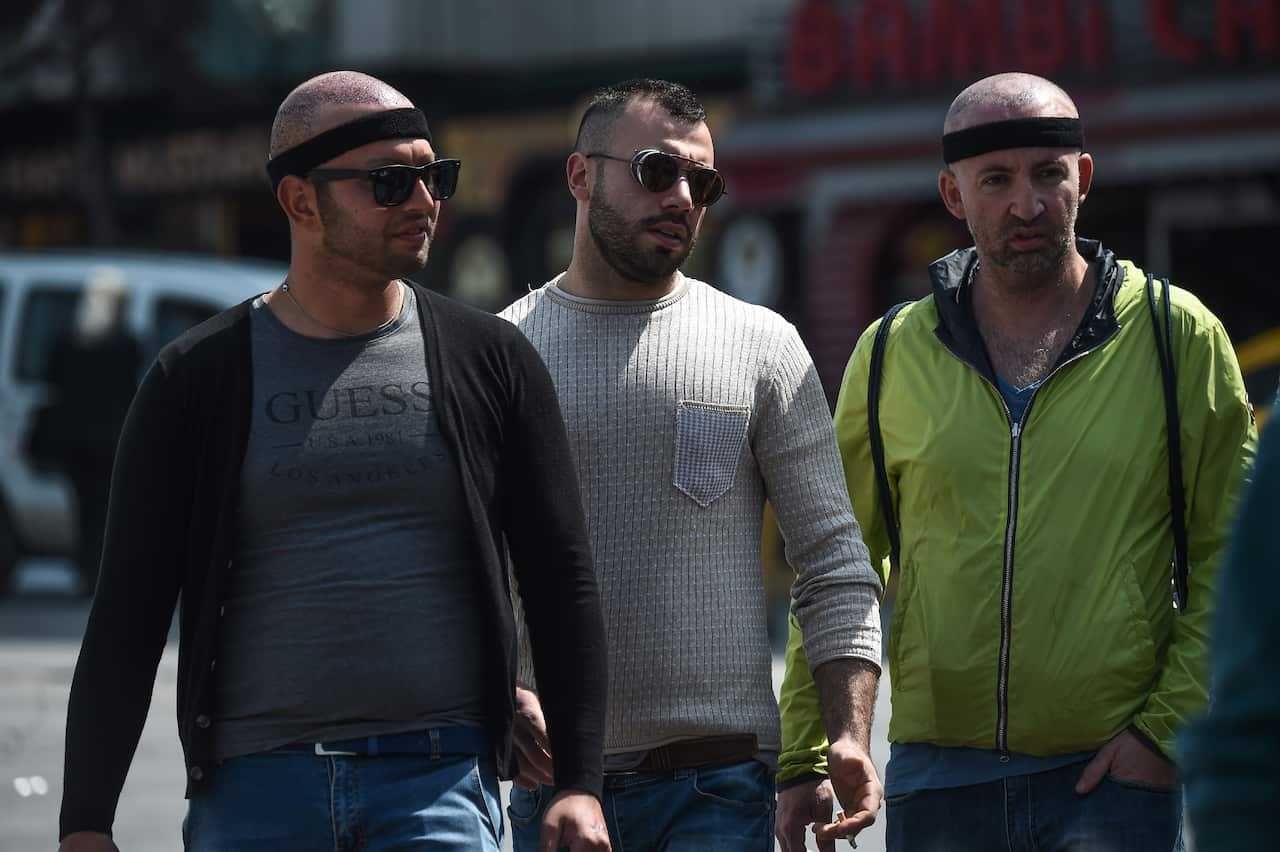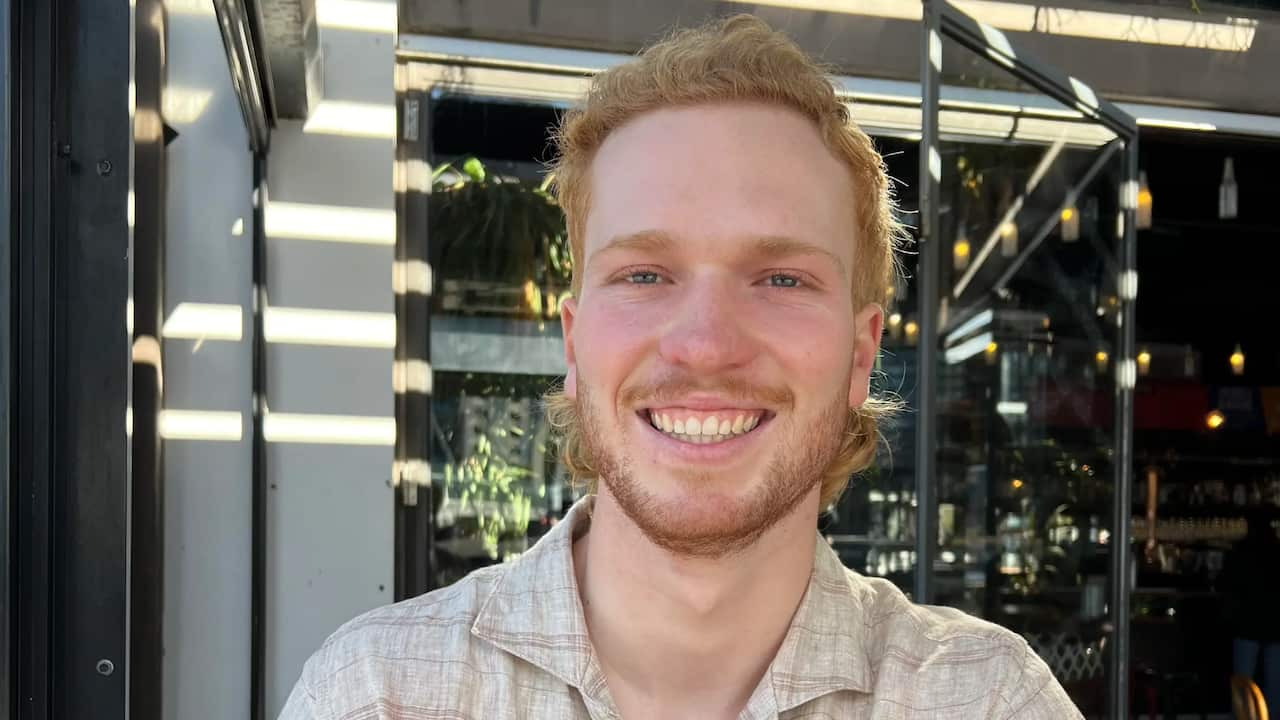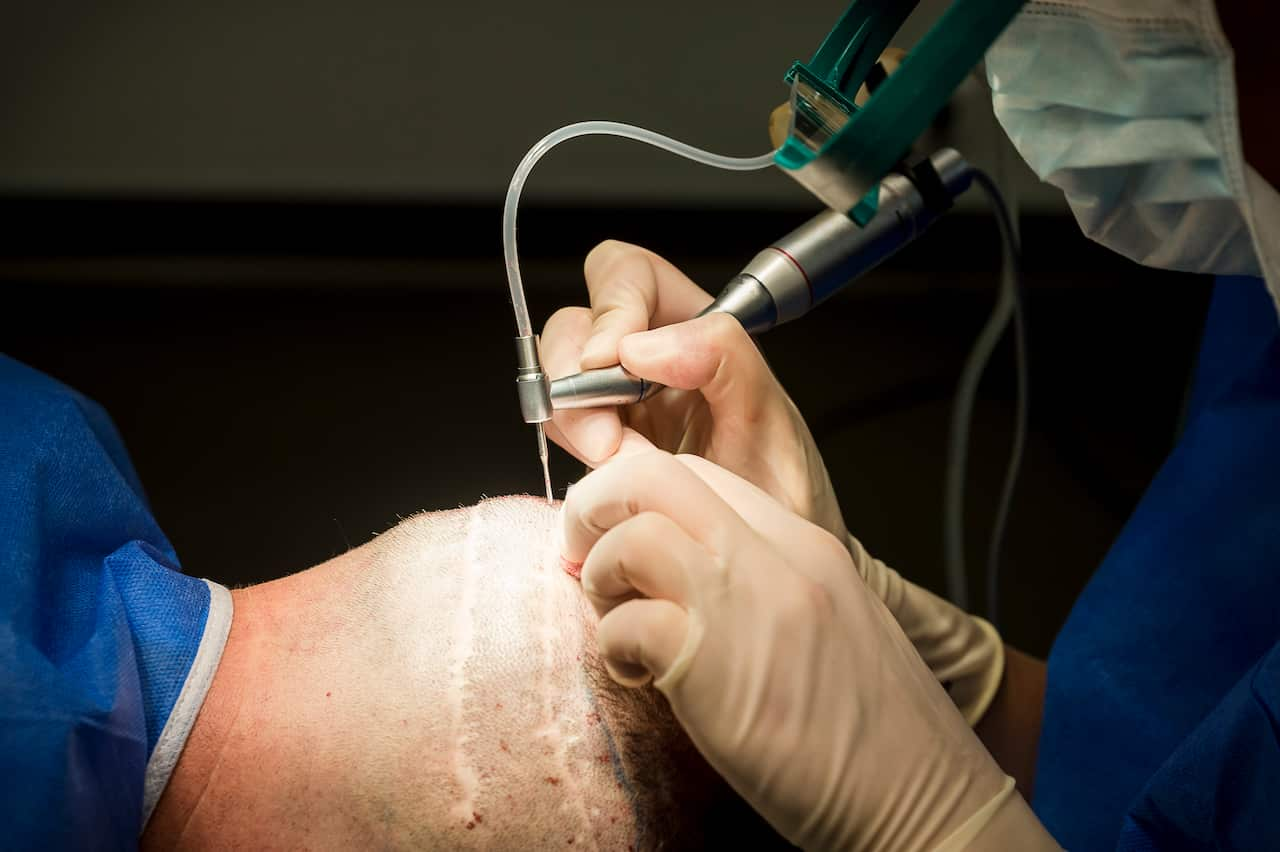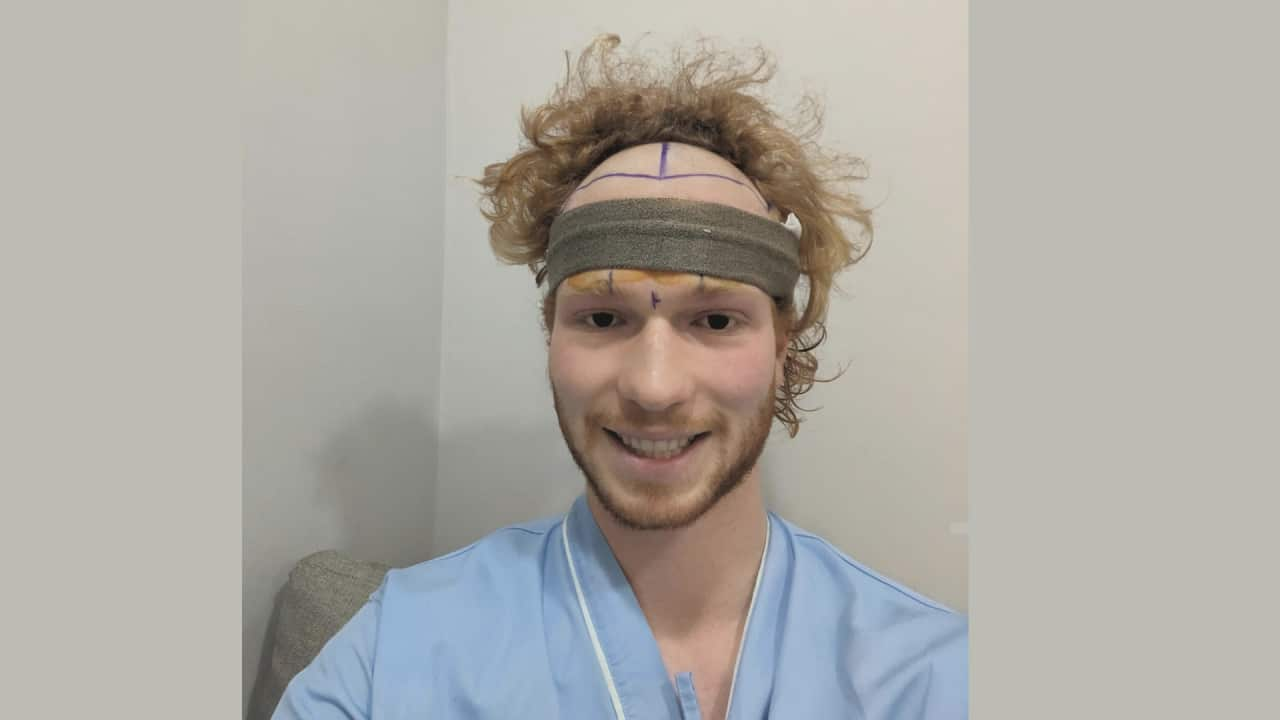At just 19 years old, Tom Robb noticed he was balding and started using hair treatments and medications, but none of them brought his hair back.
“I used to joke with my dad that he had more hair than me at 55 than I did at 20,” Tom told The Feed.
Two years later, he was flying to Bangkok in search of an affordable hair transplant and he now has a full head of hair, but despite choosing an international clinic as a cheaper option, it still set him back thousands of dollars.
The whole process cost $11,000, including accommodation and flights. He was quoted $20,000 to $25,000 for the same process in Australia.
But some Australian specialists are seeing the fallout of these procedures.
Almost every week, Dr Russell Knudsen — a hair restoration doctor says, he finds himself fixing a young man’s botched hair transplant after they had gone overseas in search of a cheaper head of hair but have instead returned with a scar — or a bald patch where one shouldn’t be.
“They’re bald on the back of their head because they’ve been over-harvested — too much hair has been taken out [causing] patching on the back of their head — it’s diabolical to fix that problem.”
Türkiye has become a popular destination for Australians seeking hair transplants. Source: Getty / Ozan Kose
Knudsen, the former president of the International Society of Hair Restoration Surgery, is concerned some men seeking overseas hair transplants are “gullible”: accepting what they read on the internet without question, and too cash-poor to consider safer options.
“Young people don’t have a lot of money, and they’re highly motivated to get their hair back because they think [hair loss] makes them look older and unattractive — and they’re going to have trouble finding a partner. It devastates their self-confidence. So they bite the bullet and cross their fingers,” he said.
An affordable market for fixing baldness
Tom is one of many Australians (typically men) booking flights to countries such as Türkiye, Thailand, Mexico and India which provide more affordable hair restoration procedures than Australia and the United Kingdom.
Türkiye’s Ministry of Health once offered tax breaks and reimbursements that allowed its medical industry to boom, attracting more than a million medical tourists per year. Comparatively, Thailand’s cheap operating costs and shorter flights make it an attractive option for Australians.
Most hair transplant clinics provide two services, FUE (follicular unit extractions), where hair follicles on the body are extracted from the back of the head and replaced on areas of balding, and FUT (follicular unit transplantation) — where a strip of skin is removed from the back of the head and individual hair follicles are placed in areas of hair loss.
Over a year after his hair transplant, Tom Robb has no regrets with his decision to fly overseas. Source: Supplied
The surgery takes up to eight hours and involves local anaesthesia, graft extraction, incisions, and implantation. It typically takes 10 days to recover and after six weeks, most patients will see hair regrowth. For some men, it can take six months until they have a full head of hair.
A growing interest in hair transplants
While data on the number of Australians who go overseas for hair transplants is not collected, Smile Hair Clinic in Istanbul, Türkiye, told The Feed in a statement it treats about 15-20 Australian patients monthly — a 35 per cent increase since 2021.
Dr Saranon Paisanpan, a hair surgeon from Max Hair in Bangkok, Thailand, said more Australians, particularly aged 30 to 40, had sought his service since the COVID-19 pandemic.
“We have so many international patients reaching out for information, for booking, for online consultations — and Australians are one of the most,” Paisanpan said.
The clinic has been in operation for 10 years and Paisanpan estimates that 40 per cent of his patients are international.
Returning with a botched head of hair
Paisanpan said several unlicensed clinics operate in Bangkok with unqualified staff, which can result in botched jobs.
“If you’re punching out too much [hair], it may cause a scar on the back,” he said.
“If you put the hair follicle in the wrong way, you might have messy hair or an unnatural hairline, always from unprofessional or inexperienced [doctors].”
Hair transplants typically take about eight hours, depending on the method used. Source: Getty / /
On top of shoddy jobs, many Australians are quoted a price from a Bangkok clinic, only to find they are asked to pay more once they arrive, Paisanpan said.
“My message is just make sure that you choose reputable hospitals with experienced staff and good reviews.”
Cracking down on loose regulations
But Thai clinics aren’t the only ones capitalising on men’s insecurity around hair loss.
Türkiye has also been a go-to destination for hair transplants, due to less stringent restrictions on clinics before new regulations were introduced in 2023.
“The Turkish system relied on the laxity of the regulations that were being presented by the Turkish authorities. So until they cracked down as late as April this year, it was basically cowboy town over there,” says Australian doctor Knudsen.
Knudsen says relaxed laws meant clinics could be operated by non-medical professionals.
That all changed in April when laws tightened on who could operate clinics. Stricter regulations meant clinics had to register with the Turkish Ministry of Health, nominate qualified surgeons and submit each patient’s details, including photos and permission to proceed. A US$8000 ($11,600) fine would be issued to clinics who didn’t comply.
“The interesting thing is that the market has contracted dramatically in the last 12 months — not really because of the regulations … but because of the amount of bad results that are going out around that have trashed their reputation to a degree,” Knudsen said.
Righting the wrongs of bad hair jobs
Knudsen has treated over-harvested hair transplants on patients who got treatment in Türkiye but were given “zero advice” on how to manage future hair loss.
“If you take most of all of their available hair when they’re 25 years of age, we have a diabolical problem when they start losing hair later on because we’ve got nothing left to move. And where it’s been moved is often at the wrong place,” he said.
He said the effects of poorly performed operations range from uneven hair growth to future issues like scarring or infection.
Knudsen said there are examples of well-done hair transplants in Türkiye.
“There are people that come back from Turkey with good results … the caveat is I don’t see the happy ones.”
A major risk in travelling overseas is the lack of post-procedure care, according to the chair of the Travel Medicine Specific Interest group at the Royal Australian College of General Practitioners, Dr Nick Zwar.
“The aftercare is limited by the fact that the services are different to Australia — and sometimes people don’t stay very long after their procedure,” Zwar said.
He said there’s also a higher risk of contracting blood-borne viruses and accessing travel insurance that covers medical procedures overseas is difficult.
“There’s no international legal framework to support that … [going through] courts in the country where you had the procedure done is not straightforward at all.”
An awareness campaign was launched by the International Society of Hair Restoration Surgery, called Fight The Fight to combat the “growing risk” of unlicensed technicians performing hair restoration surgery.
Better off than bald
Now a year from his transplant, Tom says it’s been one of the best things he’s done for himself, but still takes prescription medications to manage further hair loss.
“I went from basically bald to having hair and a hairline. I walk out the door and don’t worry about what my hair necessarily looks like. I don’t consider if I need a hat or if I think it’s going to be windy or if I need to push my hair forward. It’s just a big weight off the shoulders.
“I used to think about my hair every couple of hours and now it’s not even a thought most of the time.”



